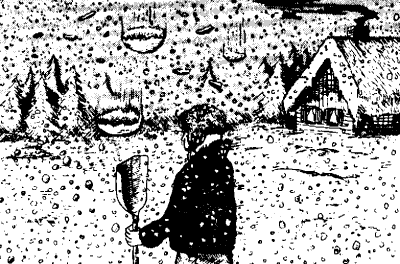 |
Science Frontiers ONLINE No. 57: May-Jun 1988 |
|
|
Unusually Large Snowflakes
In a recent review of records of falls of very large snowflakes, W.S. Pike lists eleven instances where flakes more than 5 centimeters (2 inches) in diameter have been observed. Of these, we have already cataloged six in GWP2, in Tornados, Dark Days, Anomalous Precipita tion, including the prize of the lot: the 15-inch snowflakes that parachuted down on Fort Keough, Montana, on January 28, 1887. Five of Pike's cases that we did not catalog have diameters of "only" 5 or 6 centimeters. The sixth uncataloged observation would certainly have been worth including if we had known about it:
March 24, 1888. Shirenewton, England.
"Snowstorm with extraordinary flakes, some were 3 3/4 in. in diameter, yet only � in. thick, falling like plates. The storm lasted only 2 minutes but in this short period the ground was covered 2 in. deep."
The quotation is from British Rainfall, 1988, as requoted by Pike.
In all cases, huge snowflakes are really aggregations of many thousands of individual flakes. Observers have thought that the big flakes attract individual flakes. (Pike, W.S.; "Unusually-Large Snowflakes," Journal of Meteorology, U.K., 13:3, 1988.)
Comment. Could electrostatic forces be involved?
Reference. The catalog Tornados, Dark Days, mentioned above, is described here.
 | Snowflakes 38cm in diameter fall in Montana. (From Tornados, Dark Days, etc). |